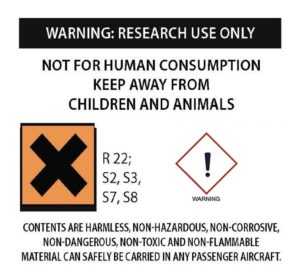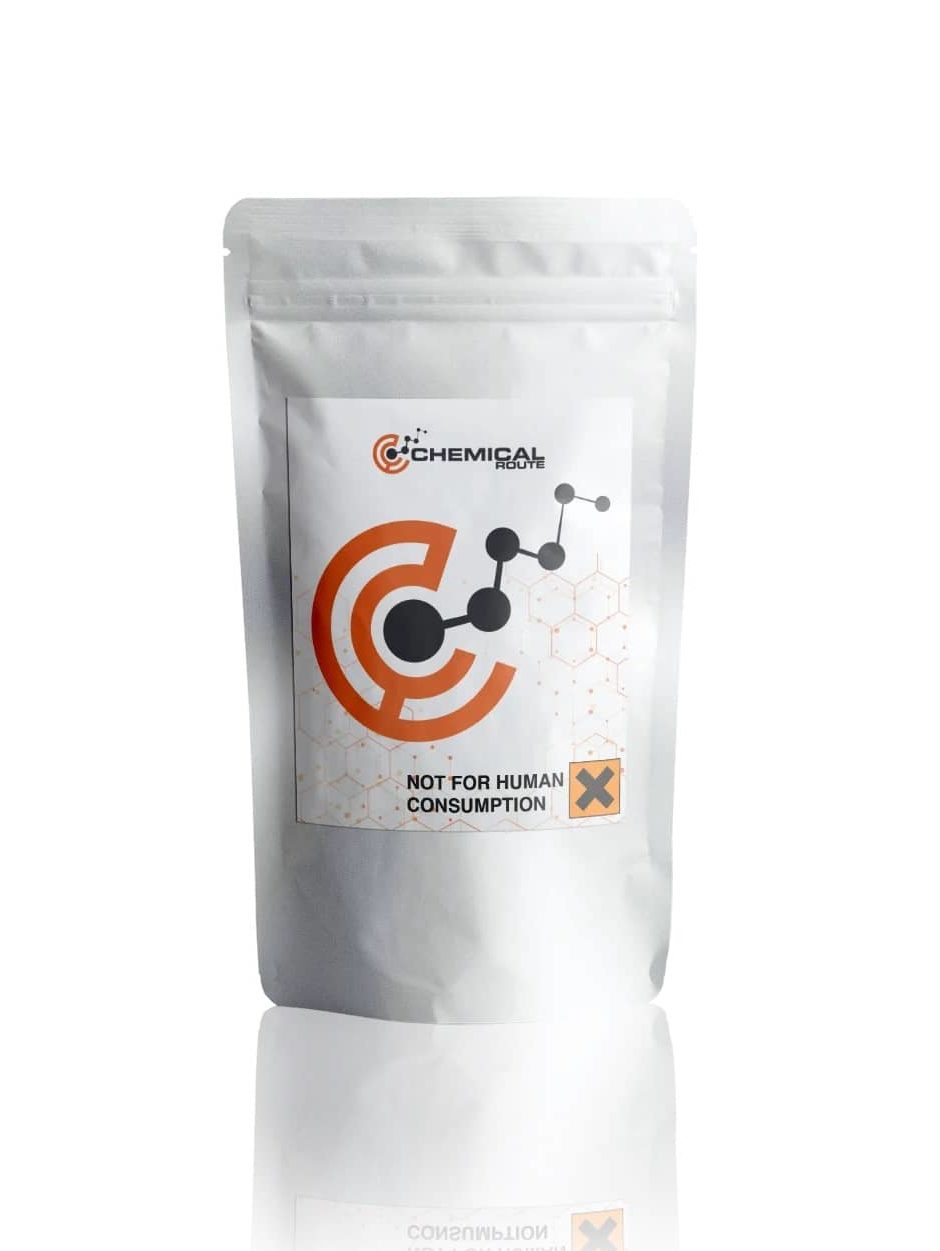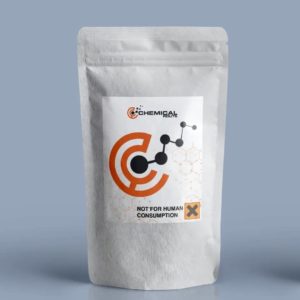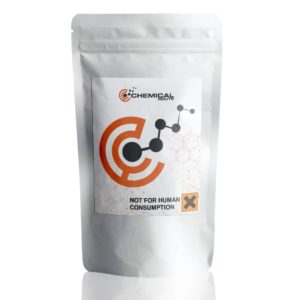Description
Dizocilpine, MK-801
Product information
IUPAC-name (5R,10S)-(+)-5-methyl-10,11-dihydro-5H-dibenzo[a,d]cyclohepten-5,10-imine
Synonyms Dizocilpine, MK-801
Formal name (5R,10S)-(+)-5-methyl-10,11-dihydro-5H-dibenzo[a,d]cyclohepten-5,10-imine
Cas number 77086-21-6
Formula C16H15N
Molar Mass 221.303 g·mol−1
Purity 99.0 % min.
Formulations A neat solid, Powder
Solubility
- DMF: 16 mg/ml
- DMSO: 11 mg/ml
- Ethanol: 20 mg/ml
- PBS (pH 7.2): 10 mg/ml
Dizocilpine, MK-801
MK-801 is an uncompetitive antagonist of the N-methyl-D-aspartate (NMDA) receptor, which is a key component of the brain’s excitatory neurotransmitter system. This channel is blocked by a magnesium ion, which leads to the depolarization of the neurons. This leads to the release of calcium, which then causes the channel to re-open.
MK-801 is a drug that is used to treat patients with schizophrenia and other neuropsychiatric disorders by blocking the N-methyl-D-aspartate receptor. It can also be used to prevent seizures.
In order to prevent the flow of ions, such as calcium, through the channel, diocillpine binds to the receptor’s various binding sites. It blocks the activity of the NMDA receptors in a voltage-dependent manner. This drug is not used as a treatment for epilepsy because of the presence of brain lesions known as “Olney’s lesions.”
It is also known to cause psychotic-spectrum reactions and cognitive disruption. It can also hinder the development of hard-to-learn tasks in animals and humans. Due to the effects of dizocilpine, it is replaced by a derivative of ketamine, which is a dissociative anesthetic, in medical procedures.
Although ketamine can trigger temporary psychosis in some individuals, its low potency and short half-life make it a safer alternative to treating this condition. In animal models, dizocilpine is the most commonly used drug to mimic psychosis.
It has also been known that dizocilpine can act as a nicotinic receptor antagonist. It can also block the activity of the serotonin and dopamine receptors.
Animal Studies
Dizocilpine has the potential to be used in studies on schizophrenia to create animal models that mimic the disorder’s negative and positive symptoms. Compared to other drugs, dizocilpine was able to successfully model both the positive and negative aspects of schizophrenia.
A study revealed that even though dizocilpine was only able to mimic some of the behavioral changes that schizophrenia patients experience, repeated administration of the drug resulted in similar neurochemical alterations. This suggests that the drug could be useful in treating schizophrenia. Aside from being able to mimic psychosis, chronic administration of the drug also resulted in neuropathological changes in laboratory animals.
Uses
Dizocilpine has been shown to have significant effects on the development and maintenance of excitotoxicity in patients with multiple neuropsychiatric disorders, such as Alzheimer’s disease and Huntington’s disease. These conditions are caused by excessive levels of extracellular glutamate, which can harm neurons and cause a variety of problems. Because of these effects, multiple studies have been performed on the use of dizocilpine as a treatment for these conditions.
In studies on the effects of dizocilpine on the development and maintenance of excitotoxic neurodegeneration, it has been shown that it can protect the hippocampus from injury.
In studies on the effects of dizocilpine on the development and maintenance of excitotoxic neurodegeneration, it has been shown that it can protect the hippocampus from injury. In most animals, the dose of dizocilpine was given one hour before the carotid arteries were blocked. However, other studies suggest that it can protect the brain up to 24 hours after the procedure.
When the brain is deprived of oxygen and blood, the release of toxic compounds, such as as as aspartate and glutamate, can occur. These compounds can be prevented from causing the development of excitotoxic neurodegeneration by blocking the receptors that are involved in the regulation of these substances.
Studies have shown that the receptor known as the NMD2B is involved in the development of anxiety and depression caused by chronic morphine use. When activated by dizocilpine, the receptor was able to suppress the effects of the drug on the rewarding effect. It is believed that the activation of the NR2B and its associated receptor kinases plays a role in the rewarding effect of morphine.
When the presence of the NR2B and its associated kinases is inhibited by co-treatment with a drug known as a NMDA antagonist, it can prevent the development of psychological dependence. In earlier studies, it was shown that the effects of dizocilpine on the learning process were not related to the state-dependency of the substance. Instead, they were related to the impairment of learning. This suggests that the use of dizocilpine can also increase the addictive properties of morphine.
In animal models of depression, the effects of dizocilpine were shown to be beneficial. It was believed that the drug can prevent the hair cell loss caused by aminoglycosides, which are known to mimic the effects of the endogenous polyamines in the body. These compounds can also cause excitotoxic damage, which leads to hearing loss.
In studies on the effects of dizocilpine on the development of typeled seizures, it was shown that the drug can block the activity of the seizures. However, it did not prevent the seizures from completing. It was also discovered that the drug can decrease the production of rabies virus by blocking the activity of the neurons that are infected with the virus.
It is not known how MK-801 can decrease the production of rabies virus. In addition, it did not produce a virucidal effect when it was inoculated with the virus. This suggests that the drug’s mechanism of action is not related to the direct destruction of the virus. It was also tested against other viral strains, such as human immunodeficiency virus and the poliovirus type I.
In studies on the effects of dizocilpine on the development of parkinsonism, it was shown that the drug can improve the muscular rigidity and akinesia of rats following a spinal trauma. It was also able to improve the recovery of the brain after 15 minutes of treatment. Unfortunately, the drug has not been able to show safety in clinical trials. This is because the inhibition of the function of the NR2B is required for normal neuron function.
Since dizocilpine is a strong antagonist of the NMDA receptor, it is known to have psychotomimetic effects, such as hallucinations. Unfortunately, the drug was not able to show safety in clinical trials. After the drug was shown to cause neurotoxic effects in some animal models, the development of dizocilpine was stopped by the drug’s manufacturer, the pharmaceutical company, Merck.
The toxicological and physiological properties of this compound has not been analyzed. Usage of this Chemical should be for research and forensic purposes only.
WARNING This product is not for human or veterinary use.

This product is only available to persons of 21 years old and above.
Hazard statement(s)
| H302 | Harmful if swallowed |
| H315 | Causes skin irritation |
| H319 | Causes serious eye irritation |
| H332 | Harmful if inhaled |
| H335 | cause respiratory irritation |
| H336 | cause drowsiness or dizziness |
| Precautionary statement(s) | |
| P264 | Wash hands thoroughly after handling |
| P280 | protective gloves/protective clothing/eye protection/face protection |
| P305 + P351 + P338 | IF IN EYES: Rinse cautiously with for several minutes. Remove contact lenses, if present and easy to do. Continue rinsing. |
| P337 + P313 | If eye irritation persists: Get medical advice/attention |
| P261 | Avoid breathing dust/ fume/ gas/ mist/ vapors/ spray |
| P271 | Use only outdoors or in a well-ventilated area |
| P304 + P340 | IF INHALED: Remove victim to fresh air and keep at rest in a position comfortable for breathing |
| P312 | Call a POISON CENTER or doctor/physician if you feel unwell |
| P403 + P233 | Store in a well-ventilated place. Keep container tightly closed |
| P405 | Store locked up |
| P501 | Dispose of contents/container to a licensed disposal company |




Reviews
There are no reviews yet.